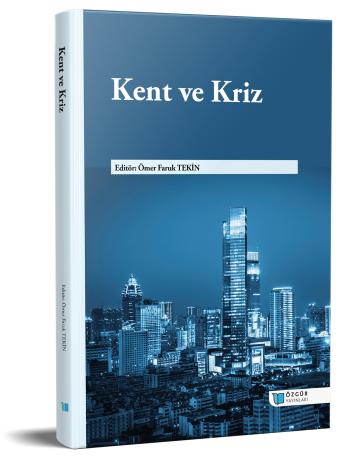
Kentsel Kriz ve Krizler Çağının Kent Modelleri
Şu kitabın bölümü:
Tekin,
Ö.
F.
(ed.)
2023.
Kent ve Kriz.
Özet
Kamusal açıdan kriz yönetimi yerel, ulusal ve küresel düzeyde toplumu etkileyen krizleri engellemek, etkilerini azaltmak veya sonlandırmak amacıyla kullanılan politika ve stratejilerden oluşmaktadır. Dünya nüfusunun yarıdan fazlasının yaşadığı kentler ve sakinleri bu krizlerin etkisine daha fazla maruz kalmakta ve daha çetin bir mücadelenin içine girmektedir. Kent yönetimleri açısından bu olağanüstü ve bunalımlı dönemlere hazırlık yapmak, yerleşim birimlerini daha esnek ve dirençli bir yapıya kavuşturmak önemli görevlerden biri haline gelmiştir. Kentleşmenin hız kazanması ve kentsel nüfusun oranının giderek artmasıyla, bu doğal ve insan kaynaklı afetlerden ve biyolojik felâketlerden oldukça etkilenen şehirlerin krizlere ve kentsel şoklara hazırlıklı olması da önem kazanmıştır. Bu çalışmada öncelikle, kriz ve kriz yönetimi konusunda kısa bir kavramsal çerçeve sunulmaktadır. Kentsel kriz tanımlanmış, kentleri etkileyen krizlerin sınıflandırılması yapılmıştır. Doğal afetler, küresel salgınlar ve insan kaynaklı felâketler sonucunda oluştuğu varsayılan kentsel krizlere sebep olan temel faktörler üzerinde durulmuştur. Çalışma, krizin işaretlerinden ziyade temel sebeplerini analiz etme amacını taşımaktadır. Çalışmanın son bölümünde, kentlerin bu krizlere karşı zayıf ve savunmasız olması, hazırlıklı ve güçlü olması tartışmaları ekseninde ortaya çıkmış kırılgan kent, dirençli kent, sağlıklı kent ve bağışık kent kavramları da tanımlanmaktadır.

